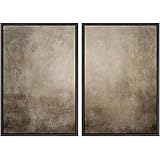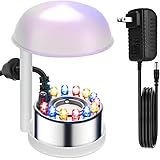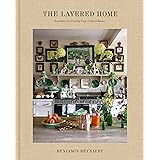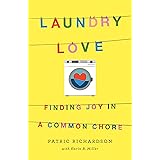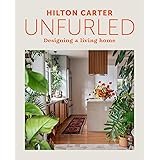A staggering 70% of homeowners report feeling overwhelmed by home decorating at some point, often leading to decisions that detract from a harmonious living space. The accompanying video expertly highlights 20 common home decorating mistakes that can subtly sabotage your home’s aesthetic. This comprehensive guide expands on those crucial insights, offering deeper analysis and practical, actionable strategies to transform your home from merely functional to truly inspiring. Discover how to elevate your interior design by understanding key principles and implementing thoughtful changes, ensuring your living environment reflects both beauty and purpose.
Enhancing Your Home Aesthetic: Addressing Common Decorating Missteps
Creating a beautiful and comfortable home environment is a goal shared by many, yet numerous pitfalls can hinder the realization of that vision. As discussed in the video, understanding these common interior design mistakes is the first step toward correcting them. From improperly scaled elements to a lack of personal touch, these errors often stem from a desire to rush the process or an unawareness of fundamental design principles. This detailed exploration delves into each issue, providing an intermediate-level perspective for homeowners eager to refine their decorating skills and achieve a truly polished home aesthetic.
1. Mastering Rug Scale: Foundation for a Cohesive Space
Incorrect rug sizing is arguably one of the most pervasive home decorating mistakes, significantly undermining a room’s intended aesthetic. As the video emphasizes, a rug should effectively anchor your furniture grouping, not merely sit as an isolated island. For instance, in a living room featuring a substantial sectional sofa and a large coffee table, a minimum 9×12 rug is typically required to ensure all primary furniture legs rest comfortably on its surface. This principle extends to dining areas where, even when chairs are pulled out, they must remain on the rug, preventing an awkward, half-on-half-off scenario. Opting for a larger rug, despite the increased investment, provides a visual frame that enhances the perception of space and cohesiveness.
Furthermore, bedroom rugs demand similar consideration to elevate the room’s comfort and style. A rug beneath a bed should extend at least two to three feet beyond the sides and foot of the bed, adequately banking nightstands and adding warmth. When space is a premium, adjusting the rug’s orientation horizontally can maximize its visual impact and functional coverage. In entryways, a diminutive rug often fails both aesthetically and practically; a larger, more substantial rug not only makes a welcoming statement but also effectively traps dirt, preserving the cleanliness of your home.
2. Prioritizing Functionality: Decorating for Real Life
Designing a home without considering the practical needs of its inhabitants is a common oversight, particularly for families. The video aptly illustrates this with personal anecdotes, advising against impractical choices like a white sofa in a household with young children and pets. Linen upholstered dining chairs, while elegant, proved unsuitable for active toddlers, necessitating a switch to more durable wooden alternatives. This commitment to functionality ensures that your beautiful decor can withstand daily life without constant worry or excessive maintenance.
Consequently, practical considerations extend to bedding choices; if pets are permitted on furniture, lighter linens may quickly show wear and dirt. Instead, selecting darker hues or highly durable, washable fabrics becomes a sensible decision. Moreover, integrating “landing zones” like locker systems or cubbies in high-traffic areas, such as a laundry room near the garage, can dramatically improve daily organization. These dedicated spaces for backpacks, jackets, and shoes, though not always the pinnacle of aesthetic design, are invaluable for maintaining order and reducing clutter in a busy family home.
3. Avoiding Matchy-Matchy: Cultivating a Curated Look
The inclination to purchase furniture sets or accessories that perfectly match is a pervasive home decorating mistake that can instantly date a space and strip it of personality. While consistency is important, an overly coordinated look often creates a sterile, showroom feel, lacking the depth and character of a truly curated home. For example, opting for a bed frame from one retailer and then sourcing dressers and nightstands from different stores or even thrift shops allows for a more eclectic and authentic mix. This approach prevents your home from appearing as if it were lifted directly from a catalogue, encouraging a more bespoke environment.
In addition, resisting the urge to keep pillows that come with a new sofa and instead selecting complementary yet distinct cushions can significantly enhance visual interest. The objective is to achieve a cohesive aesthetic where items appear to belong together naturally, rather than being part of an obvious, pre-packaged ensemble. Seeking out unique pieces, perhaps from online marketplaces like Wayfair or Amazon, or even thrifting antique finds, contributes to a layered and individualized decor. This blending of new and old, varied textures and finishes, imbues your home with a unique narrative that reflects your individual journey and tastes.
4. Achieving Cohesion: Weaving a Consistent Design Thread
Conversely, a lack of cohesive design can make a home feel disjointed, creating a jarring experience as one transitions between rooms. A home where the living room is distinctly blue-themed while the kitchen boasts a vibrant red palette often lacks a unified flow. Establishing a core color palette—typically two to three primary colors with a few accent shades—and strategically repeating these colors throughout your home is paramount. This can be achieved through subtle elements such as throw pillows, artwork, decorative objects, or even towels in bathrooms, ensuring a harmonious visual journey.
Moreover, consistent use of materials and textures can also contribute significantly to this cohesive feeling. For instance, if natural wood tones dominate one area, incorporating similar wood elements or complementary natural fibers like linen or jute in adjacent spaces can create continuity. Thoughtful repetition of certain design motifs or even a particular metal finish can tie diverse spaces together seamlessly. This deliberate integration of design elements across different rooms fosters a sense of unity and calm, preventing your home from resembling a “Rubik’s Cube house.”
5. The Art of Hanging Curtains: Elevating Window Treatments
Improperly hung curtains are another common visual misstep that can dramatically impact a room’s perceived height and spaciousness. The video correctly identifies the awkwardness of curtains hung too low or too narrow, which can make a room feel smaller and “chopped shorter.” A simple yet highly effective rule of thumb is to hang curtain rods as high and wide as possible, ideally just a few inches below the ceiling or crown molding, and extending beyond the window frame. This creates an illusion of taller ceilings and larger windows, instantly elevating the entire space and enhancing the room aesthetic.
Furthermore, ensuring curtains are long enough to either kiss the floor or pool slightly provides a luxurious and polished finish. Curtains that stop mid-wall or just below the windowsill often appear truncated and detract from the room’s vertical lines. Investing in appropriately sized curtain panels and installing them correctly is a relatively inexpensive upgrade that yields significant visual returns. This attention to detail in window treatments can transform a utilitarian element into a sophisticated design feature, contributing substantially to the overall elegance of your home.
6. The Imperative of a Design Plan: Avoiding Haphazard Decisions
Embarking on a decorating project without a clear design plan or style direction is a recipe for frustration and financial waste. Rash decisions made under pressure or due to feeling overwhelmed often lead to regrettable purchases and a disjointed outcome. Commencing with a well-thought-out strategy, as recommended in the video, involves drawing inspiration from platforms like Pinterest or Houzz to visualize the desired overall feel of a space. This preparatory phase is not merely about aesthetics; it’s about defining the functional layout, color scheme, and furniture types that will best serve the room’s purpose and your personal preferences.
Consequently, developing a plan helps to mitigate impulse buying and ensures that each investment contributes meaningfully to the overarching vision. By dedicating time to research and conceptualize, homeowners can avoid the costly cycle of acquiring items that ultimately do not fit or serve their intended purpose. A comprehensive plan acts as a roadmap, guiding selections from paint colors to furniture arrangements, thereby fostering a deliberate and successful design process. This strategic approach minimizes stress and maximizes satisfaction with the final result, solidifying a well-considered home aesthetic.
7. Uncovering Your Unique Design Style: Beyond the Box
Many homeowners struggle to articulate their personal design style, often leading to a lack of confidence in their decorating choices. The video emphasizes the importance of understanding what genuinely resonates with you, rather than blindly following trends. While specific styles like “traditional,” “coastal,” or “minimalist” provide helpful frameworks, it’s perfectly acceptable, and often preferable, to blend elements. The key lies in identifying consistent patterns in your curated inspiration boards—be it a preference for light woods, specific color palettes like blues and greens, or an affinity for airy, earthy rooms with botanical accents. This introspective process reveals your authentic design DNA.
Moreover, true personal style often transcends rigid labels; it’s about what brings joy and comfort to your everyday living. For instance, someone drawn to both traditional scrollwork and modern clean lines might lean towards a transitional style, which harmoniously bridges the two. This thoughtful self-assessment allows for the creation of a home that is uniquely yours, rather than a generic imitation. By recognizing and embracing your distinctive preferences, you cultivate a space that genuinely reflects your personality and preferences, ensuring a truly personalized home aesthetic.
8. Harmonizing Design Styles: Blending with Intent
While discovering a unique design style is empowering, the indiscriminate mixing of vastly different aesthetics can result in a chaotic and visually unsettling environment. The video cautions against combining “polar opposites” without a unifying strategy, such as pairing traditional ornate pieces with stark modern furniture and mid-century minimalist elements. Such a melange often lacks a focal point, causing the eye to wander without a clear place to rest, diminishing the overall interior design aesthetic. The goal is to blend, not simply to mash together, various styles.
Hence, successful style fusion involves identifying commonalities or creating deliberate contrasts that complement each other. For example, a rustic farmhouse table can be beautifully juxtaposed with sleek, contemporary chairs if a consistent color palette or material is maintained. This intentional blending requires an understanding of design principles such as balance, proportion, and harmony. When executed thoughtfully, marrying different styles can create a rich, layered look that feels collected and sophisticated, rather than haphazard. The aim is to create a dialogue between different eras or aesthetics, resulting in a unique and captivating interior.
9. The Prudence of Paint Samples: Beyond Tiny Swatches
Selecting paint colors based solely on small store swatches is a widely committed decorating error that frequently leads to disappointment. As the video wisely points out, the artificial lighting in retail environments drastically differs from the natural and artificial light within your home, which can significantly alter a color’s appearance. A shade that seems perfect under fluorescent lights might appear too cool, too warm, too dark, or too light once applied to your walls. This disparity often necessitates repainting, incurring additional time, effort, and expense.
Consequently, the prudent approach involves purchasing decent-sized paint samples and applying them to a significant area of your wall. Observing these patches throughout the day, under varying light conditions—morning, midday, and evening—is critical for assessing their true hue. For visual learners, this larger-scale representation is invaluable, providing a more accurate perception than a minuscule chip. Investing a small amount in samples ultimately saves substantial time and money by ensuring your chosen color genuinely enhances your home’s ambiance and aesthetic.
10. Art and Wall Decor: Scale, Grouping, and Impact
Artwork and wall decor, when improperly scaled or poorly arranged, can either overwhelm a space or appear insignificant, diminishing the overall room aesthetic. Large walls adorned with tiny pictures, or conversely, oversized art crammed onto a small wall, disrupt visual balance. The video highlights the importance of matching art scale to the wall size and avoiding awkward groupings that are either too far apart or too close together. Our natural inclination towards odd numbers in design suggests that groupings of three or gallery walls of six often achieve a more pleasing composition.
Moreover, when creating a gallery wall, maintaining consistent spacing, ideally around two inches between frames, ensures a cohesive and polished look. The height at which art is hung is equally crucial; typically, the center of a piece or grouping should be at eye level (approximately 57-60 inches from the floor). This strategic placement allows the artwork to be comfortably viewed and integrated into the room’s design, rather than appearing as an afterthought. Thoughtful selection and arrangement of wall decor transforms bare walls into captivating focal points, injecting personality and enhancing the room’s character.
11. Embracing the Slow Process: The Art of Intentional Decorating
The contemporary culture of instant gratification, fueled by rapid online shopping and quick deliveries, often leads to rushing the home decorating process. This impatience is a significant home decorating mistake, frequently resulting in impulse purchases that do not align with long-term vision or quality standards. Furnishing an entire space overnight, as the video warns, often leads to items that are either ill-fitting or of subpar quality, necessitating costly replacements down the line. A truly beautiful and functional home is cultivated over time, not acquired in a single shopping spree.
Therefore, adopting a slower, more intentional approach allows for careful consideration of each piece, ensuring it genuinely contributes to the desired aesthetic and functionality. This measured pace enables homeowners to save for higher-quality items, explore unique finds, and truly live in their space before making permanent decisions. Embracing the journey of decorating your home allows for a more personalized, comfortable, and ultimately satisfying outcome. Remember, your home is a sanctuary and an extension of your personality, deserving of thoughtful and unhurried curation.
12. The Peril of Trends: Investing in Timelessness
Decorating a home too heavily with fleeting trends or attempting to mix too many disparate fads can lead to a quickly dated space requiring frequent and expensive overhauls. While trends like shiplap or specific cool-toned grays offer fresh perspectives, their ephemeral nature means they can swiftly fall out of favor. The video sagely advises focusing on classic, timeless pieces for major investments like tile, flooring, or large furniture, which are costly and difficult to swap out. This strategy ensures the foundational elements of your home remain stylish for years to come.
Conversely, trends can be successfully incorporated through smaller, less permanent accents such as throw pillows, artwork, or decorative accessories. These elements are easily updated as tastes evolve, allowing you to infuse current styles without committing to substantial financial outlays. The balance lies in understanding what genuinely brings you joy and suits your personal style, rather than being swayed by every passing craze. By prioritizing timeless design for bigger ticket items and reserving trends for more interchangeable elements, you can create a home that feels both current and enduring, maintaining a sophisticated home aesthetic.
13. The Power of Decluttering: Starting with a Clean Slate
Attempting to design or redecorate a space without first decluttering is an exercise in futility, often exacerbating feelings of overwhelm and chaos. The video underscores that sometimes, simply clearing out excess items can dramatically improve a room’s atmosphere and functionality. Clutter obscures the true potential of a space, making it difficult to envision new arrangements or appreciate existing features. This preliminary step is not just about tidiness; it’s about creating mental and physical space for creativity and intentional design choices.
Consequently, beginning any design project with a thorough declutter allows you to see your space with fresh eyes, identifying what truly needs to stay and what can be removed. This process often reveals hidden gems and forgotten areas, paving the way for more effective organization and thoughtful decoration. Removing unnecessary items allows the remaining pieces to shine, contributing to a sense of calm and order. A decluttered environment is a prerequisite for a successful design, ensuring that your efforts are focused on enhancing an already clean and organized foundation, ultimately improving your overall room aesthetic.
14. Curating Collections: Quality Over Quantity in Trinkets
An abundance of small trinkets, knick-knacks, and decorative items can easily transform a stylish home into what feels like a “thrift store” or a cluttered antique shop. This common home decorating mistake overwhelms the eye, making it difficult to appreciate individual pieces or the overall design. The video suggests scaling back on numerous small items in favor of a few larger, more impactful decorative pieces that genuinely resonate with you. This selective approach elevates the perceived value and intention of your chosen decor.
For example, instead of dozens of tiny figurines, consider displaying a few cherished ceramic vases or a single, striking sculpture. If you have a passion for collecting, as was popular with Beanie Babies or Precious Moments in the 90s, explore modern curio cabinets or glass display cases. These dedicated display solutions offer a refined way to showcase your collections without contributing to visual chaos. Thoughtfully chosen larger items provide visual anchors, creating a sense of balance and sophistication, while allowing your true favorites to stand out and contribute meaningfully to your home aesthetic.
15. The Cohesive Color Palette: Unifying Your Home’s Hues
An inconsistent color palette throughout the home can lead to a jarring experience as one moves from room to room, creating a sense of disorganization. When each room is painted a different bold color—yellow here, pink there, green elsewhere—the effect can be overwhelming and visually “messy,” akin to a “Rubik’s Cube house.” While individuality in each space is desirable, a lack of overarching color harmony detracts from the home’s ability to feel like a unified sanctuary. Establishing a core set of two to three main colors with carefully chosen accents is crucial for continuity.
Thus, by repeating these chosen colors through various elements such as decor, textiles, and even subtle wall accents, a cohesive narrative is woven throughout your entire home. This doesn’t mean every room must be identical, but rather that a harmonious relationship exists between them. For instance, a neutral base palette can be consistently applied, with different accent colors introduced in each room that still relate to each other (e.g., using varying shades of blue, green, and teal). This strategic application of color prevents visual fatigue and fosters a sense of calm and intentionality, greatly enhancing the overall home aesthetic.
16. The Emptiness of Bare Spaces: Infusing Personality
A common pitfall, particularly for those new to decorating or who prioritize function over form, is neglecting to decorate at all, resulting in sterile or uninspired spaces. The video refers to this as the “typical bachelor pad” phenomenon, where basic furniture sets are acquired, but personal touches are conspicuously absent. A lack of personal style and warmth leaves a room feeling cold, unwelcoming, and devoid of character. Decorating is not merely about filling space; it’s about imbuing it with life, personality, and comfort.
Therefore, even minimal effort can yield significant returns in transforming a bare room into an inviting one. Incorporating plants, for example, brings natural elements and a sense of vitality into any space. Adding personal touches through artwork, photographs, meaningful objects, or textiles like throw blankets and pillows instantly introduces warmth and individuality. These elements reflect your passions, experiences, and aesthetic preferences, making a house feel like a home. By embracing even minimal decoration, you create an environment that feels lived-in, cherished, and genuinely reflective of its occupants, significantly improving the home aesthetic.
17. The Wisdom of Seeking Assistance: Embracing Collaboration
Many individuals, especially those with a passion for design, can become so engrossed in their vision that they overlook the value of an external perspective. The video candidly acknowledges the human tendency to get “tunnel vision” when making decorating decisions, particularly for significant investments like furniture or color palettes. Hesitation to ask for help is a common home decorating mistake, leading to missed opportunities for improved outcomes or confirmation of choices.
Consequently, seeking a second opinion from a trusted friend, family member, or even a professional can provide valuable clarity and alleviate decision fatigue. A fresh pair of eyes can spot inconsistencies, offer alternative solutions, or simply affirm your choices, bolstering confidence. If budget permits, hiring an interior decorator or designer, even for a consultation, can be an invaluable investment. Professionals bring expertise in scale, color theory, and spatial planning, guiding you towards a truly cohesive and functional space. Embracing collaboration ultimately refines your vision and ensures a more polished and satisfying home aesthetic.
18. The Impact of Lighting: Illumination as an Element of Design
Underestimating the transformative power of lighting is a significant interior design mistake that can undermine even the most thoughtfully decorated space. Builder-grade “boob lights” or generic recessed fixtures, while functional, often lack the character and aesthetic appeal to truly elevate a room. The video highlights how easily outdated or uninspired lighting fixtures can detract from an otherwise stylish home, particularly in new builds or older properties where they are common.
Hence, thoughtfully chosen lighting fixtures act as “jewelry” for the home, adding personality, texture, and visual interest. Consider swapping out basic fixtures for options that align with your overall design style; for example, a traditional home might benefit from an elegant brass chandelier, while a modern space could feature sleek, minimalist pendants. Beyond overhead lighting, incorporating various light sources—table lamps, floor lamps, and task lighting—creates layers of illumination, enhancing ambiance and functionality. Studying inspiration photos with an eye for their lighting choices can reveal how these elements contribute significantly to the overall mood and home aesthetic, making a huge difference in the perceived luxury and warmth of your rooms.
19. The Art of Variety: Layering Textures, Metals, and Eras
A lack of variety in home decor often results in a flat, uninteresting, and visually monotonous space. Relying on a single texture, metal finish, or furniture height throughout a room is a common home decorating mistake that starves the eye of visual interest. The video emphasizes that incorporating variety—mixing metals, combining old with new, and varying textures and heights—is a “fun way to add your personality” and create a dynamic, inviting environment. This layered approach adds depth and sophistication to your home aesthetic.
For instance, pairing a distressed wooden console table with a sleek, modern metallic lamp and soft, textured linen drapes creates a rich interplay of elements. Introducing different heights through tall floor lamps, eye-level artwork, and low-slung coffee tables keeps the eye moving and prevents a static appearance. Furthermore, don’t be afraid to repurpose furniture in unconventional ways; a beautiful dresser can serve as an elegant entryway console, or an antique buffet might become a stunning media cabinet. Such creative thinking, often fulfilled by unique finds from thrift shops or Facebook Marketplace, injects individuality and character, demonstrating that one person’s “trash” can truly be another’s treasure.
20. Infusing Personality: Beyond the Pinterest Board Clone
The ultimate home decorating mistake, perhaps encompassing many others, is a lack of genuine personality, resulting in a “cookie-cutter house copied right off of a Pinterest board.” While inspiration is valuable, a home devoid of personal touches feels generic, failing to reflect the unique individuals who inhabit it. True design success lies in curating a space that is profoundly specific to you, even while adhering to established design rules. This deep personalization creates a genuine connection between you and your living environment.
Whether your style leans towards abstract artwork and vibrant colors, minimalist Scandinavian clean lines accented solely by plants, or a blend of eclectic finds, your home should tell your story. It is through these deliberate choices—the unique objects, the cherished memories, the preferred textures and colors—that a house truly transforms into a home. A beautifully curated space with pops of your personality not only makes a huge difference in how you feel within your home but also profoundly impacts how guests perceive and experience your unique home aesthetic, ensuring it feels welcoming, authentic, and truly your own.





